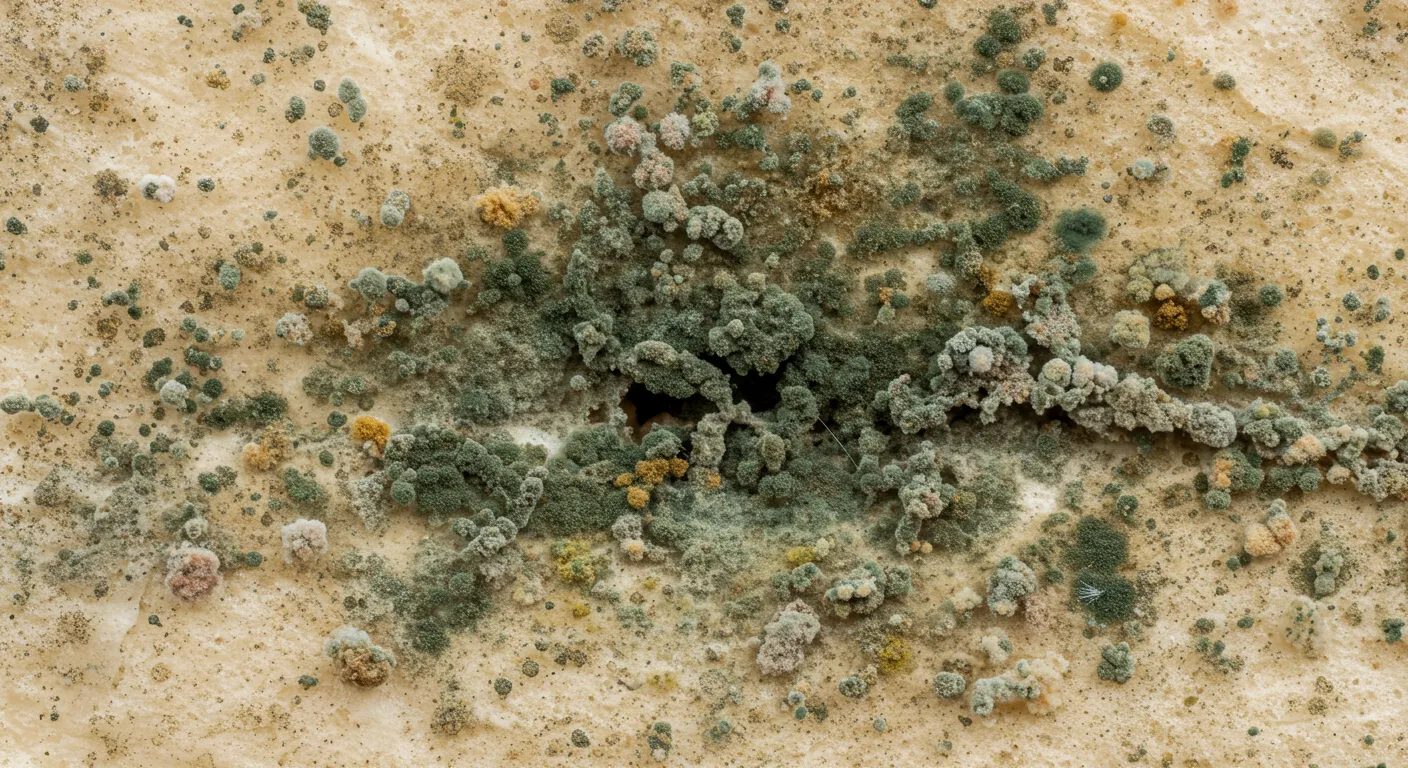If you’re thinking about adding spray foam insulation to your home, there’s a good chance you’ve asked this question—or at least wondered about it.
“Can mold still grow behind it?”
The short answer? Yes, it’s possible—but not likely when it’s installed correctly. In most cases, the issue isn’t with the spray foam itself. It’s with what’s already behind your walls, or how the foam is applied.
For folks here in Raleigh, NC, where the summers are hot and humid, and the winters can be damp, mold is a real concern. We’ve seen it in crawl spaces, attics, and behind old batt insulation. So, let’s walk through when mold might show up, why spray foam actually helps prevent it, and what you need to watch out for.
Why Homeowners Worry About Mold and Insulation
Mold is more than a stain—it can trigger allergies, damage your home, and lead to expensive repairs. And unfortunately, insulation can play a role in trapping moisture, especially in older homes that weren’t built with today’s moisture control standards.
In North Carolina, where humidity sticks around for most of the year, it’s not uncommon for moisture to creep into walls through air gaps or small leaks. Once it’s in there—and if it can’t escape—that’s when mold takes hold.
Most folks assume the insulation itself is the issue, but in reality, it’s usually a combination of:
- Poor ventilation
- Leaky roofs or flashing
- Plumbing issues
- Gaps that let warm, moist air reach cold surfaces (hello, condensation)
That’s why choosing the right insulation—and making sure it’s installed right—really matters.
What Makes Spray Foam Mold-Resistant
Let’s clear something up: spray foam doesn’t “kill” mold, and it’s not mold-proof. What it does do is create an environment where mold doesn’t have much of a chance to grow in the first place.
It Stops Air (and Moisture) from Getting In
Closed-cell spray foam forms a dense, solid layer that seals off tiny cracks and gaps. That air seal is important because most indoor mold starts with warm air hitting a cold surface and condensing into water.
Mold Has Nothing to Feed On
Unlike fiberglass or cellulose, spray foam doesn’t contain organic material—no paper backing, no plant fibers, nothing mold can chew on.
Let’s Compare It Side-by-Side:
| Insulation Type | Mold Resistance | Vapor Barrier Needed? | Allows Air Leaks? |
|---|---|---|---|
| Spray Foam (Closed) | ✅ High | ❌ Usually not needed | ❌ No |
| Fiberglass Batts | ❌ Low | ✅ Yes | ✅ Yes |
| Cellulose | ❌ Low | ✅ Yes | ✅ Yes |
Can Mold Still Grow Behind Spray Foam?
Let’s be honest—yes, it can. But it almost always happens because the wall already had a moisture problem or because someone rushed the job.
We’ve come across homes where spray foam was applied over wet wood, or where a roof leak was hidden behind the insulation. In those cases, the foam just locked in that dampness—and mold had the perfect environment to spread.
Here’s What to Look Out For:
- Bubbling paint or odd wall texture
- Musty odors, especially after it rains
- Allergy symptoms that spike when you’re indoors
- Walls that feel cold or damp in spots
Why the Installer Matters More Than the Product
We can’t stress this enough—even the best spray foam won’t help you if it’s not installed properly.
Before spraying, the installer should:
- Test moisture levels in framing and sheathing
- Check for existing leaks or damage
- Prep surfaces (dry, clean, no debris)
- Know if a vapor barrier is needed for your wall type
Unfortunately, a lot of budget jobs or DIY kits skip these steps. And that’s when problems show up a few months—or years—down the road.
How to Prevent Mold Behind Spray Foam
We’ve worked on hundreds of homes around Raleigh, and if there’s one thing we’ve learned, it’s this:
Mold prevention is just as much about airflow and water control as it is about insulation.
Here’s how to keep mold away after you insulate:
Maintain Healthy Indoor Humidity
Your HVAC system should keep the house around 40–60% humidity. Anything higher? Mold loves that.
Seal All Air Leaks
Make sure your spray foam team seals every gap and penetration, especially around windows, outlets, and framing seams.
Check Your Crawl Space and Attic
Mold doesn’t care where it starts. Poorly vented crawl spaces and leaky attics often cause problems that work their way into your walls.
When Spray Foam Might Not Be the Best Fit
We love spray foam, but we’re not here to push it on every house. Sometimes, it’s not the right tool—especially in older or historically protected homes.
You might want to think twice if:
- Your home has stone or brick walls with no moisture break
- You live in a home with antique plaster that needs to breathe
- There’s no way to vent trapped moisture
In those cases, it’s worth talking to a pro and mapping out the best insulation strategy.
Want to Stop Mold Before It Starts?
Spray foam is one of the best tools we have to fight mold—but only when it’s used the right way. It’s not a magic fix, and it’s not for every situation. But when paired with smart building practices, it can give you years of comfort and peace of mind.
Need help figuring out what’s behind your walls?
We offer free home inspections and moisture checks throughout Raleigh and surrounding areas. We’ll tell you what’s going on—and what you can do about it.
📞 (919) 301-9435
📧 [email protected]
🌐 Visit Our Website
Frequently Asked Questions
Can mold really grow behind spray foam insulation?
Yes, but only if moisture was present before installation or if the foam was applied incorrectly.
Is spray foam insulation mold-proof?
Not entirely—but it’s one of the most mold-resistant options out there.
How does spray foam help prevent mold in humid climates like Raleigh?
It seals out air and moisture, preventing the condensation that mold needs to grow.
What causes mold behind walls, even with insulation?
Leaks, trapped humidity, and poor air sealing are the top culprits.
Does closed-cell spray foam act as a vapor barrier?
Yes—it’s dense enough to block moisture, so you often don’t need an additional vapor barrier.
Should I worry about mold if I already have spray foam installed?
If it was applied by professionals and your home is dry, you’re likely in good shape.
What are signs of mold behind spray foam insulation?
Musty smells, allergy symptoms, and bubbling paint are common red flags.
Can improper spray foam installation cause mold?
Absolutely. Moisture testing and prep work are crucial before any spray job.
Do I need a moisture barrier with spray foam?
Most closed-cell installations don’t need one—but it depends on the wall type and climate.
Is mold more common behind fiberglass than spray foam?
Yes. Fiberglass allows air and moisture to pass through, creating ideal conditions for mold.




